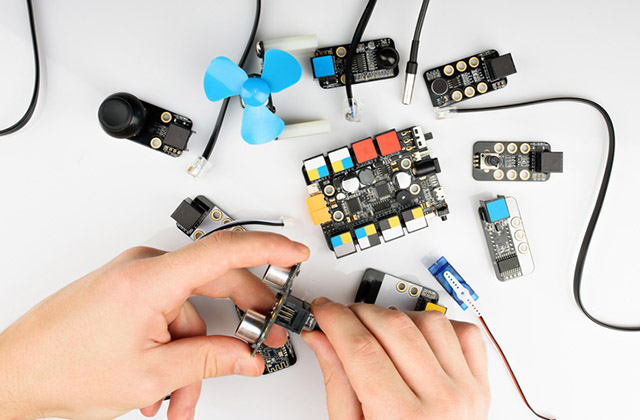What Is a Makerspace?
You might have seen the term “makerspace” on a school’s website or heard it mentioned by students. But what exactly is a makerspace?
Simply put, a makerspace is a place where you can make things. It’s a place for hands-on learning with all the tools for creativity. Every school’s makerspace is different, but you might find a woodshop, 3D printing, audio-visual equipment, and hand tools. You might also find computers and computing devices like Arduinos or Raspberry Pi computers. Makerspace at American University has sewing machines and dress forms so students can combine fashion and engineering.
Sometimes a makerspace is housed in the engineering department. Other times it may be inside the university library, or in its own building on campus. At Ball State University, some residence halls have their own makerspaces. You may even find makerspaces off-campus. Many public libraries now have a makerspace set aside for people who want to create something new.
A makerspace helps you turn your ideas into real, tangible objects. Let’s say you’re in an engineering class working on a design project. Well, with a makerspace, you can go build a prototype of your design. What can you make in a makerspace? Almost anything. Here are a few examples:
- documentary film
- model of a city for urban planning
- prototype of a prosthetic limb
- metal sculpture
- robot
A place for collaboration
One of the major goals of a makerspace is to provide students with the tools and environment to collaborate. Don’t be surprised to see students from different programs and grade levels working together in a makerspace. Professors and graduate students might get involved too.
At Adelphi University’s STEAMlab, about 17 professors from art and science disciplines work together to help students create and collaborate in the maker space. Art students work alongside engineering students. Community members outside the university are invited to use the space. Students and teachers from nearby public schools come in regularly for workshops.
At Auburn University, students can join SPARC, the Student Projects and Research Committee. Their weekly meetings provide plenty of opportunities for students to learn and create together. Through collaboration, the group has built robots, a tesla coil, a portable device for cooling a person’s internal body temperature, and more. Working and learning together is part of what makes a makerspace so interesting.
Do you want to try a makerspace?
While makerspaces are becoming more popular on campuses in the United States, many universities still do not have one. Elmhurst College is actively working on creating one in collaboration with the local community high school. Check to see if the school you’re interested in has one.
Here is a shortlist of international-friendly universities that have makerspaces:
- Adelphi
- American University
- Auburn University
- Ball State University
- Berkeley
- Florida State University
- George Mason University
- Louisiana State University
- Northern Arizona University
- Oklahoma State University
- Texas Tech University
- UMass Amherst
- University of Dayton
- University of Illinois at Chicago
- University of Kansas
- University of South Carolina
- University of the Pacific
- University of Utah
